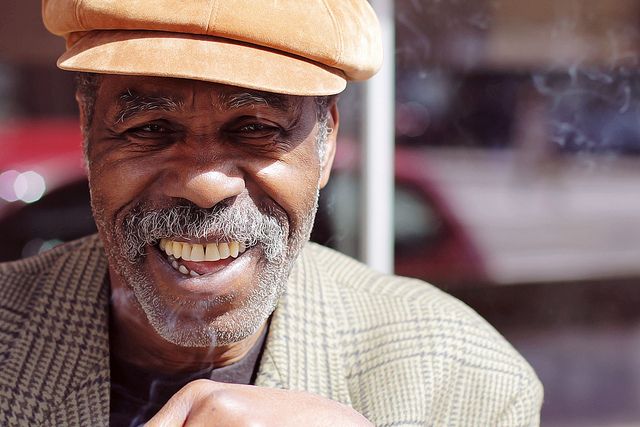[dt_button link=»http://d165vjqq8ey7jy.cloudfront.net/mp3/32764/se-7541s.mp3″ target_blank=»true» button_alignment=»default» animation=»fadeIn» size=»small» style=»default» bg_color_style=»custom» bg_color=»#333333″ bg_hover_color_style=»custom» bg_hover_color=»#444444″ text_color_style=»custom» text_color=»#ffffff» text_hover_color_style=»custom» text_hover_color=»#dddddd» icon=»fa fa-cloud-download» icon_align=»left»]Скачать[/dt_button]
[dt_divider style=»thin» /]
Transcript:
Voice 1
Welcome to Spotlight. I’m Luke Haley.
Voice 2
And I’m Liz Waid. Spotlight uses a special English method of broadcasting. It is easier for people to understand, no matter where in the world they live.
Voice 3
Say Cheese! Smile!
Voice 1
In many places, people smile when they have their picture taken. They are smiling purposefully, to look happy. A smile is a worldwide expression. It is a way that all people show emotion on their faces. All humans know how to smile. But whydo we smile? Are there different kinds of smiles? And can a smile mean something different for a man than for a woman? Does a person’s culture affect how much they smile? Today’s Spotlight is on smiling.
Voice 2
The corners of your mouth lift up. Your lips curve around your teeth. Your cheeks move closer to your eyes. You are smiling! And you are not the only one. Humans smile a lot. In fact, smiling is instinctual. This means that people often smile without even thinking about it. Even babies smile. People were created to be able to smile!
Voice 1
People smile in many different situations. Many people smile when they are happy! But people also smile when they are afraid, or uncomfortable. And people smile for many different reasons. The first is that it is a natural instinct. Imagine that you see an old friend come through your door. You will most likely smile with joy. But you have not told yourself to smile. Your face just does it! It is a natural reaction to your feeling of happiness.
Voice 2
Scientists think there is another reason people smile. We often smile when we meet people we do not know. This shows that we are friendly. Smiling helps us protect ourselves. We decide who we can trust by a person’s smile. A smile shows that a person is friendly. He or she is not dangerous. This may be why some people smile when they are uncomfortable or afraid. It is a way to create a connection with other people.
Voice 1
Smiling has one other purpose — it makes people feel happier. Dr. Nakia Gordon is a professor of psychology at Marquette University. She told Marquette Magazine:
Voice 4
“You do not have to be happy to smile. And you can smile and not be happy… at least not at first. But smiling can make you feel happier. Research suggests that our brains receive feedback from other parts of our bodies to help decide how we feel. Smiles do not just represent and communicate how we feel to others. They also help us experience those feelings more fully.”
Voice 2
Smiling, even when you are not happy, can make you feel better. But not all smiles are the same. Different kinds of smiles mean different things. Guillaume Duchenne was a French doctor in the nineteenth century. He studied facial expressions. Duchenne looked at the muscles in the human face. He studied how they moved to make facial expressions. He found that there were two main sets of muscles that people used to smile. One of these is around the mouth, as the lips move up. The other set of muscles is around the eyes. When people smile in a particular way, their eyes close a bit. This smile often creates lines in the skin, wrinkles, around the eyes.
Voice 1
It is possible to smile just using the mouth muscles. Scientists have shown that this kind of smile is often not voluntary or from a natural reaction. It is not a real smile, caused by feelings of joy or happiness. It is the kind of smile that people do for a camera, or to be polite. A smile that moves the muscles near the eyes is usually a real smile. Scientists call this a Duchenne smile. And studies show that people can tell the difference. People trust a person who has a Duchenne smile more than someone who just smiles with his or her mouth.
Voice 2
But smiling also means different things for different kinds of people. For example, men and women often have different habits of smiling. In many places, women smile more than men. Is this because women are happier? Not really. It is more likely because girls and women are taught to smile more than boys and men. In many cultures, smiling makes a person seem less serious and more friendly. Men may feel pressure to seem more serious. Women often feel pressure to be friendly. Marianne LaFrance is a social psychologist. She wrote a book about smiling. In an interview with American Scientist she said:
Voice 5
“Smiling is done mostly for other people. It is usually believed to show a positive emotional state of the smiler. But in fact, smiling is socially useful. We would not survive in our day-to-day contacts with other people if there was not some level of smiling by people. It more often falls to women to take care of that part of things.”
Voice 1
Smiling is also different across cultures. In some places, such as the United States, people smile a lot. In other cultures, such as Russia, smiling too much may seem strange. In many countries, smiling can have many different meanings.
Voice 2
A team of scientists in Japan and the United States did a study. They tested if people’s smiles were seen as trustworthy. They found that in Japan, people judged trust by the expression around people’s eyes. But in the United States, people looked mainly at the mouth.
Voice 1
The scientists think this is because people in the United States usually show more facial expression. So they expect a large smile to show in the mouth. But in Japan, people do not always show their emotion through facial expressions. So to find out what someone really feels, they look more at the eyes. A real smile, or Duchenne smile, will show in a person’s eyes.
Voice 2
This difference between Japan and the United States can also be seen in another kind of smiling. In modern times, people communicate more with technology and media. Smiles are a part of this communication too! In SMS and text messages, people use symbols to make smiling faces. This helps to communicate emotions quickly and easily. In Japan, a smiling face symbol has a straight mouth and curved eyes. But a Western smiling face has a curved mouth and straight eyes!
Voice 1
It does not matter if smiles are texted or seen on a friend’s face. Smiles are an important part of human expression. Smiling can make you start to feel better when you are sad. And smiling at other people can make them feel good too. In the words of Mother Theresa: “We shall never know all the good that a simple smile can do.”




